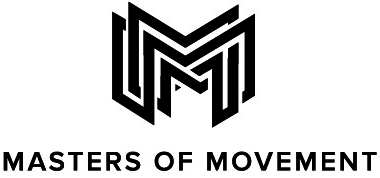Are You Suffering From Low T?
Todays guest post comes from Nick Johnson, director of programming at Halevy Life in Manhattan. Coincidentally I’ll be speaking at the Masters of Movement seminar taking place at Halevy Life on November 7-8, also featuring luminaries like Charlie Weingroff, Chris Duffin and Leo Totten.
*****
Millions of Americans every year suffer from this condition, and many times they don’t realize it until it becomes a serious problem. Maybe you’ve been experiencing some pain in your shoulders, your lower back might get sore and stiff, and your neck might not turn well without your whole torso having to turn too. All of these things can be attributed to a serious condition; you in fact suffer from low T… -spine mobility.
Your Thoracic spine, or T-spine, consists of 12 vertebrae from the base of your neck to the middle of your back and provide the attachment point for your ribs on the backside. Your T-spine is designed to provide support to the body by flexing, extending and rotating through movement. Addressing T-spine mobility can be tricky, however, and determining whether someone needs more extension based or flexion based mobility is the key to improving purposeful thoracic movement.
From my experience, people who need more extension based mobility are the guys who come in for their first session, tell you about how they sit all day, and then their workout program consists of a day of Chest & Tri’s. Back and Bi’s and Shrug PR’s are the consistent marker of their program effectiveness. If they can squeeze in an extra day the Leg Press comes in handy for rolling all of “Leg Day” into a quick 25 minute leg crushing sesh…brah.
These are they kind of guys who find shoulder mobility in using their uuuuggee traps to raise the scapulae to allow for rotation at the gleno-humeral joint during pressing exercises. You might also find that they tend to bench with the bar touching higher up on their chest and Push-ups occur with the elbows flared out and shoulders rounded forward. An inability to extend at the T-spine inhibits scapular retraction with downward rotation. Essentially, all scapular movement occurs with the assistance of the Upper Traps, Levator Scapulae and Serratus Anterior. You will be able to see this when any pressing, pulling or stabilization of the upper back is preceded by upper trap activation and a shrugging motion.
The Fix:
Bang away at thoracic extension and shoulder blade depression, retraction and downward rotation. This should include 3 point and kneeling thoracic extension/rotation work, unilateral overhead shoulder stability work and scapular movement with a focus on maintaining core stability. Another thing to keep in mind is soft tissue work on the pec minor and serratus anterior. This should help to free up the shoulder blades so they want to move in the right pattern. In addition, some shoulder mobility-ish drills can also help to improve the relationship of the scapula to the thoracic cage (T-spine + Ribs). Here are a few I program in when trying to fix flexion based T-spine limitations:
1:
Banded allows each shoulder to move the way it needs to and improves shoulder stability through that range of motion, and lying flat keeps the extension from occurring at the thoraco-lumbar junction, forcing the T-spine to get into extension to accomplish the movement.
2:
https://www.youtube.com/watch?v=yDT7xelXFxc
This is an example of someone who has a T-spine stuck in extension. You will be able so see this in the next section.
So the fix for someone “stuck” in flexion is to increase their ability to extend. It gets a bit trickier if someone seems to reside in excessive extension, however. This doesn’t happen as often, but typically will be present in athletes (particularly those who compete in overhead sports like baseball, tennis, volleyball, etc.) or people who tend to spend most of the day on their feet. Athletes that require a lot of shoulder movement for their sport will get into extension and stay there, so the scapulae have free range for movement when it is required. As far as the rest of us that spend all day on our feet, the easiest way to do this is to lean back with your shoulders and push your hips forward. If you take 10 trainers, I’m willing to bet at least 8 out of the 10 will have an overextended thoracic spine in a resting state.
For some reason, it seems to be easier to get into extension in both the T-spine and lumbar spine to allow you stand up than keeping your core engaged. Compression of the spine uses less energy than muscular activation, and this is why we see extension issues with people who spend all day on their feet.
Things to look for if you suspect someone might be stuck in too much extension:
- A flat upper back. The T-spine should have a natural curve to it, and should reside in a slight flexed position due to the structure of the 12 vertebrae it consists of.
- Scapular winging. The inferior aspect of the scapulae will stick out, which is what happens when you take a curved shoulder blade and try to place it on a flat rib cage.
- A flared rib cage, which is extremely evident with deep respiration.
- Not always the case, but an overly extended T-spine will often lead to a bit of an anterior pelvic tilt as well. Remember, shoulders back means hips forward.
The Fix:
Spending some time on breathing techniques can really prove beneficial to someone stuck in extension. Here is one of my go-to breathing drills for extension based T-spine problems:
https://www.youtube.com/watch?v=NncpWH0lvWI
Take some time to do some soft tissue work and stretching for the lats, and build core strength with T-spine flexion. One of the ways to accomplish this is the standing abs, which can be found in a ton of Charlie Weingroff’s training logs (and if this guy is doing it, so should you). I’ve found it easiest to start in a kneeling position with your butt resting on your heels, and then progress to standing. Most people will want to initiate the movement by driving their hips back, so locking them in place will reinforce core development without hip swing to initiate the movement.
One of the go-to drills for extension based T-spine issues for me is a Push-up focusing on scapular protraction and Thoracic extension at the top.
https://www.youtube.com/watch?v=4j-TWbanz00
Like I said before, this person has a T-spine that is stuck in extension. The thoracic spine remains relatively flat, even when he is trying to press it towards the ceiling at the top. Combining the breathing exercise above and T-spine extension with scapular protraction should help improve these extension based issues.
After you determine whether a flexion or extension based strategy is needed, add in a couple T-spine rotation drills when programming as well. The top 3 that I use are:
https://www.youtube.com/watch?v=PDulI4WrWCQ
This is a great place to start. Allows us to work on thoracic rotation, and placing the lower back against a supported structure keeps the rotation away from the lumbar spine.
2.
https://www.youtube.com/watch?v=lQ3dy-ME_fE
This is a good way to take thoracic rotation into a less supported, but still stable position. If you’re feeling really motivated, and just so happen to have a mace nearby, you can try this
3.
Not happening? Don’t worry, you can always aspire to be 1/5 the Viking Duffin is.
Regardless of what state you or your clients might be in, spending time on increasing T Levels will always improve purposeful movement and as far as how much mobility should you have…
Some awesome corrective strategies for improving thoracic function can be found HERE.
We all know that watching a couple of Dean’s videos will immediately shoot T levels through the roof!
For more awesome ways of making you move like a beast, train like a Viking, and dominate the world of fitness entirely, make a point of coming to Masters of Movement in New York City November 7-8. There’s still a few seats left and they’re going quick, so act now and get some mind-bending knowledge from really smart and strong guys. And me.




One Response to Are You Suffering From Low T?